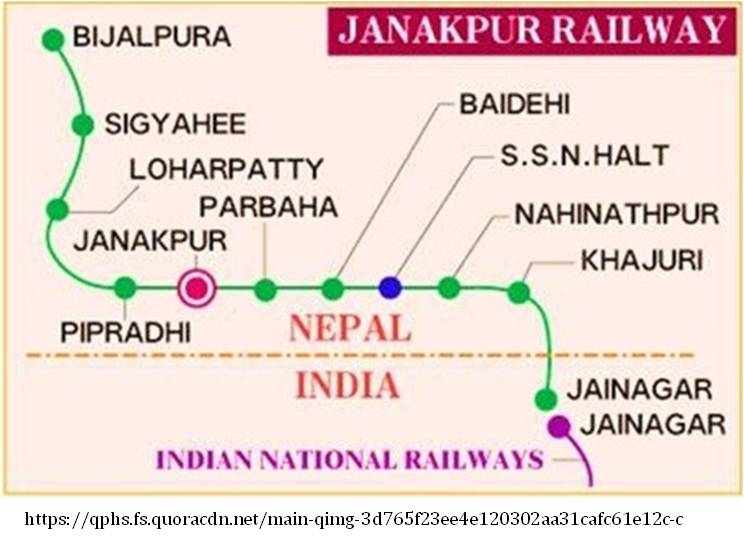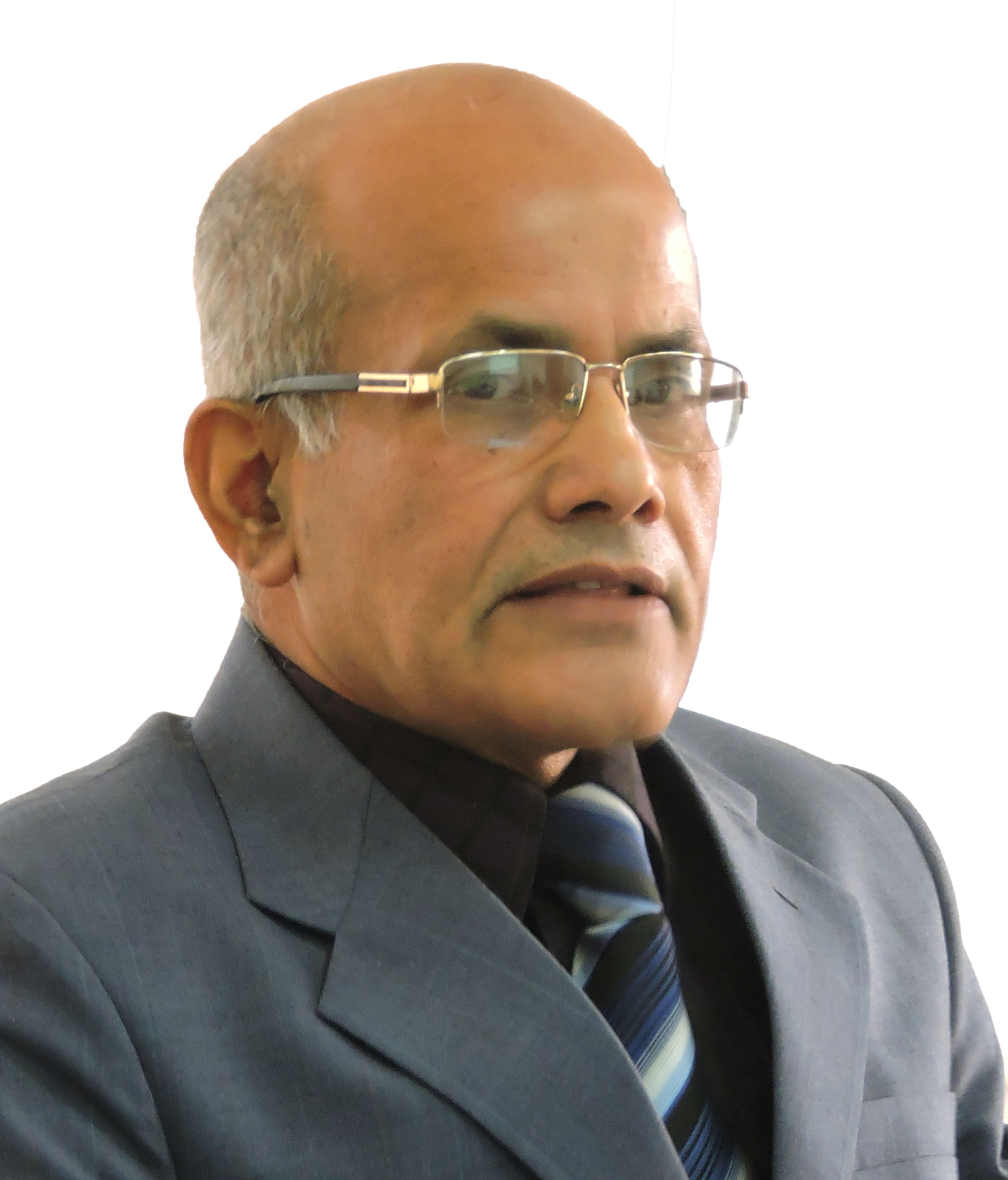People in Nepal and India were shocked when Nepal’s only Janakpur-Jaynagar Railway that connected Janakpur, the holy city of Nepal with Jaynagar, the border town in Bihar, India was closed almost a decade ago. But those people are in rejoicing mood now as India helped Nepal to run the railway train service with modern amenities on this route. Because of this development, people-to-people connectivity apart from the transportation of goods between the two countries is likely to gain further momentum.

On account of the COVID-19 pandemic, the trains on the Janakpur-Jaynagar route would not become operational any time soon. So, it is parked at Nepal Railway Station in Jaynagar for maintenance and safety. Expectations are that the trains would start their services around the time of Ram-Janaki marriage ceremony which will be observed in Janakpur in mid-December.
People of Janakpur were overwhelmed to see the train at their doorstep when it arrived at Janakpur Railway Station on Friday, the 18th of September. Out of excitement, thousands of people gathered at the station to have a view of the first modern train even amidst the growing cases of COVID-19 that has infected 84,570 people and killed 528 people in Nepal.
Being amused at the sight of the train at Janakpur Railway station, Ram Sagar Pandit, a resident of Janakpur, said, “I am thrilled to see the train. After the services of the old train were stopped some ten years ago, we had given up hope of ever being able to see the train run again. But now our dream has come true”
Sipu Yadav added, “I will like to thank the Indian government for its help to construct the railway link between Jaynagar and Janakpur, apart from the railway stations. We never had any broad-gauze modern railway in Nepal before.”
Parvati Mandal continued, “The train could have provided its service long ago as most of the construction work of the railway had already been completed. But for reasons unknown, the train service could not be resumed. Though late, the train is likely to be made operational.”
It was not without reason why the people were so excited about the resumption of the train service. In the past, they had seen merely a small-gauze railway train, unlike the most modern broad-gauze railway train now at display, pending actual operation. In the old train, the steam engine used to be operated by coal or even wood-logs. In the mid-1990s, the Indian government had provided diesel engines to run the train and it operated for years.
The Janakpur-Jaynagar railway line and the train service were constructed at the initiative of the Prime Minister Chandra Shumsher Jang Bahadur Rana over nine decades ago in 1927. Initially, it was primarily used to transport logs from the forest regions of Mahottari district in Nepal to India, but later on, it was converted into a passenger train. By that time, the railway line used to cover 52 kilometres distance from Jaynagar (India) to Bijalpura in Mahottari district in Nepal.
The new railway line is being constructed at the cost of INRs. 8.8 billion under the India-Nepal Development Partnership programme with the financial grants by the government of India. It covers the total distance of 69-kilometresbetween Jaynagar-Janakpur-Bardibas. Construction work on this project started in 2014 and the project work was expected to be completed by 2020.
As per the plan, the railway track for this project is being constructed in three phases. Construction of the first phase of the project of 35-km that links Jaynagar and Janakpur/Kurtha was completed in 2019. But the second phase covering a distance of 17-km linking Kurtha/Janakpur to Bhangaha and the third phase of 17 km that links Bhangaha to Bardibas, are still under construction.
India’s Konkan Railway Corporation Limited delivered two modern Diesel-Electric Multiple Unit (DEMU) trains to the Nepal Railway as per the agreement signed between the Konkan Railways Corporation Ltd and Nepal government on May 10, 2019. The trains delivered to Nepal were manufactured at Integral Coach Factory, Chennai at the order placed by the Department of Railways, Nepal. The trains have all modern amenities and latest AC-AC propulsion technology. These trains would be used for passenger services between Jaynagar and Janakpur/Kurtha. As per the design, these trains could run at a speed of 110 km per hour on the tracks.
Apart from the Janakpur-Jaynagar Railway, Nepal also operates Raxaul-Sirsiya railway covering 6 km distance from the Indian border town of Raxaul to Sirsiysiya dry port near to Birgunj (Nepal). But this train is used only for freight transport.
With the operation of Jaynagar-Janakpur section of the Nepal Railway, the religious tourism is likely to boom as many people from India would get an opportunity to visit Janakpur, which happens to be the holiest among the holy places for the Hindu pilgrims of the world as Goddess Sita, wife of Lord Ram was born there.
In the Ramayan period in Treta Yuga some ten thousand years ago, Ram was married to Sita at Janakpur. Ever since, each year hundreds of thousands of Hindu pilgrims visit Janakpur to pay homage to Goddess Sita and Lord Ram. Thousands of people throng in Janakpur on the occasions of Vivahapanchami in mid-December to commemorate the wedding day of Goddess Sita and Lord Ram. Even a Barat Party comes from Ayodhya to for this purpose. Another occasion on which people congregate in large numbers in Janakpur is Ram Navami, to celebrate the birth of Lord Ram.
Hindu pilgrims all over the world would rejoice if Janakpur is eventually connected to Ayodhya, the birthplace of Lord Ram, in the Uttar Pradesh state of India. During the visit of Indian Prime Minister Narendra Modi to Janakpur in 2018, a direct bus service was launched between Janakpur and Ayodhya. Because of such connectivity, the traditional historical, cultural, social bonds and economic relations between the two countries got a further boost.
Significantly, a twin-city agreement had also been signed between Nepal and India for the development of Janakpur and Ayodhya, but no progress has been made in the execution of the project. Efforts should be made to renew the twin-city agreement and help connect Janakpur with Ayodhya through the Ram Janaki Path that is under construction.
Over the years, Nepal has been receiving active cooperation from India for the development of its infrastructural facilities, like roads, airports and Integrated Check Posts at the Customs Offices. In this effort, the Jaynagar-Janakpur train service has added a new milestone in Nepal-India relations. It would not only help the people of Nepal and India to travel to each other country but more than that it would link the Nepalese people to the massive 115,000 km network of the Indian Railways, which happens to be the largest rail network in Asia and the second largest in the world.
(The paper is the author’s individual scholastic articulation. The author certifies that the article/paper is original in content, unpublished and it has not been submitted for publication/web upload elsewhere, and that the facts and figures quoted are duly referenced, as needed, and are believed to be correct). (The paper does not necessarily represent the organisational stance... More >>
Image Source: https://static.india.com/wp-content/uploads/2014/10/india-nepal-flag.jpg











Post new comment